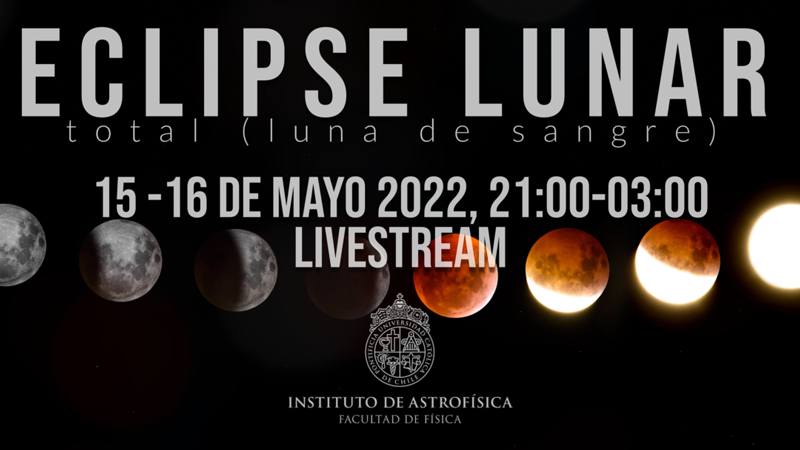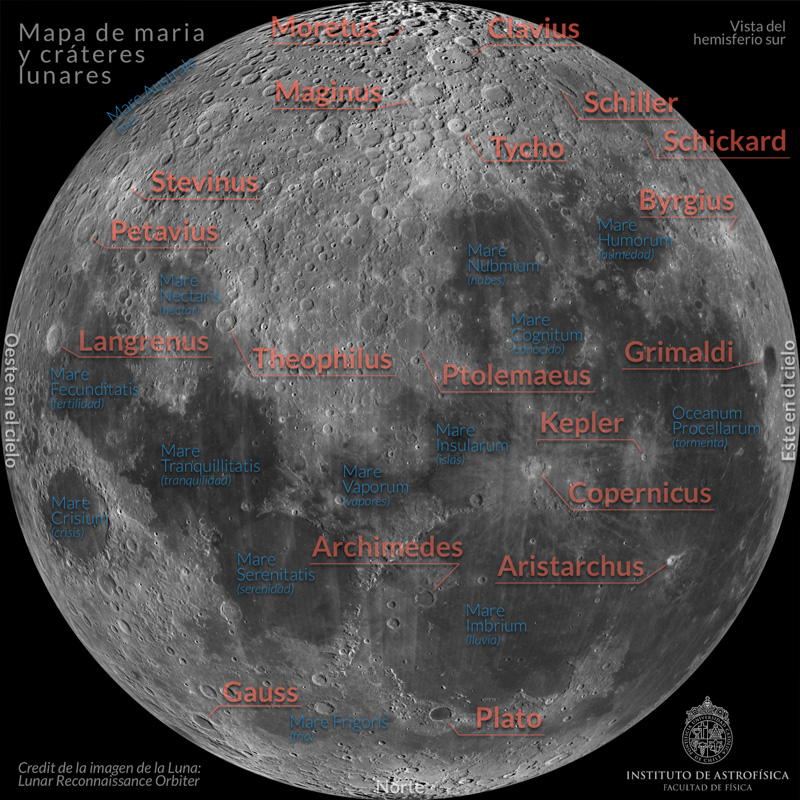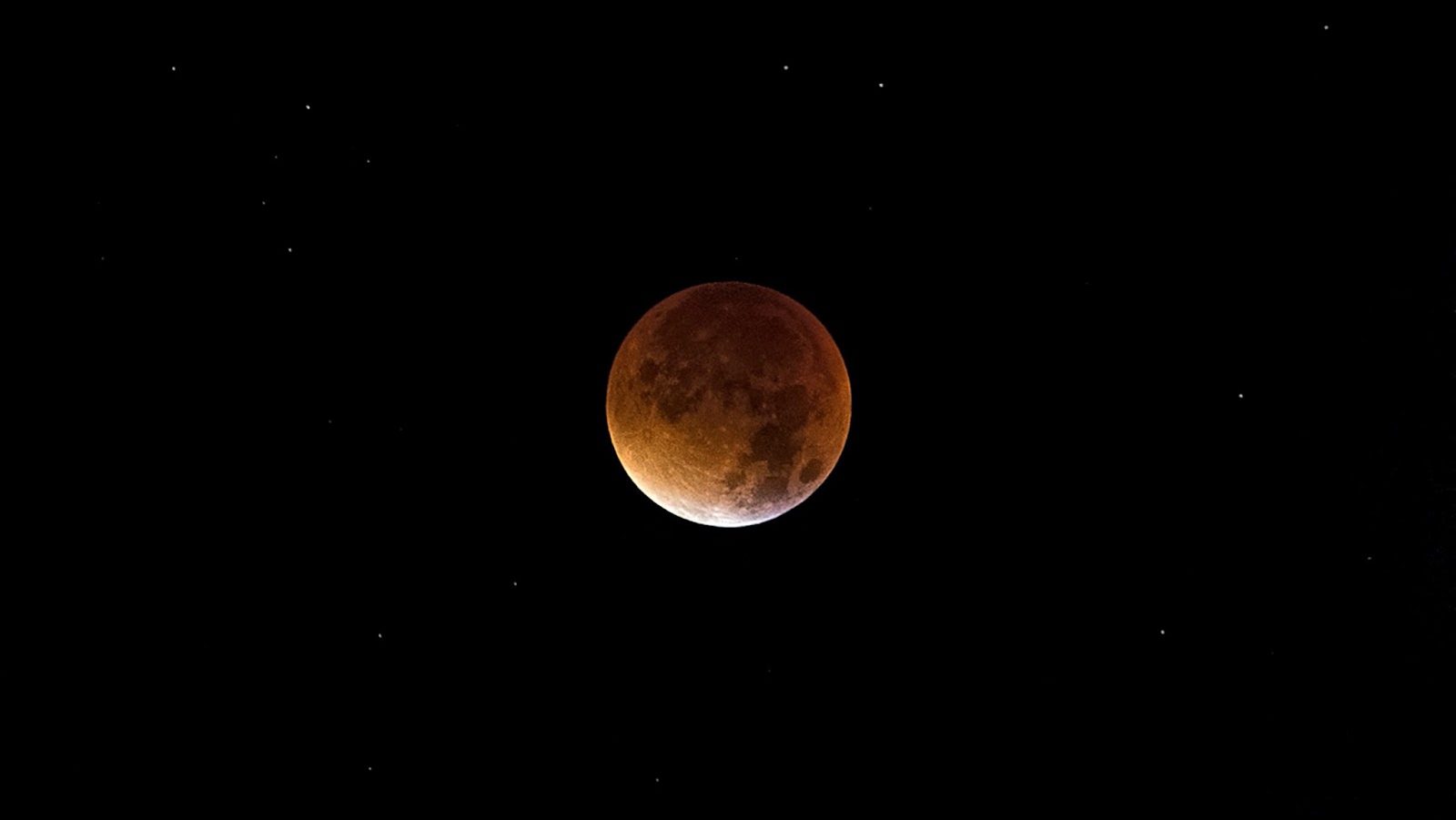This phenomenon is recorded tonight (May 15-16, 2022) due to a total lunar eclipse and will be visible throughout Chile. The eclipse hunting team of the Institute of Astrophysics will transmit live from Valle Nevado.

Observing the moon with a telescope is like entering a strange world. Even a small telescope with an entrance pupil of only 10 cm diameter shows rich details such as ridges, grooves, faults, impact debris, and various differences in surface textures. It is not hard to imagine how Galileo Galilei felt when he first observed the Moon in this level of detail and made his famous first drawings of our satellite in 1609.
These are some details that we will be able to observe today during the “Blood Moon”, which is part of the total lunar eclipse that will take place between the night of Sunday May 15th and the early morning hours of May 16th. The astronomical event will be visible throughout South America, including Chile, Central America and the east coast of the United States and Canada and will be broadcast via the YouTube channel of the Institute of Astrofísica.

It is not necessary to have a telescope like Galileo’s to appreciate this phenomenon, as even with the naked eye there are many features that can be observed on the surface of the Moon.
What do we see with the naked eye?
The colors of the moon, for example, appear white and gray. The gray areas are called mare and were formed by giant impacts during the Moon’s early evolution, impacts so violent that liquid lava from the hot interior filled gigantic basins. This lava is similar to basalt on Earth and later cooled to create the darker smooth surfaces called maria (plural of mare, Latin for ‘sea’). The maria have a higher concentration in rocks containing iron oxides (FeO), magnesia (MgO) and titanium dioxide (TiO2) than the brighter surface areas.
The brightest areas, meanwhile, are the highlands formed by the oldest crustal material, which is evident due to the large number of craters. The highlands are rich in a type of rock called anorthosite and have a higher concentration of aluminum (Al2O3) and calcium (CaO). It is also possible to appreciate the largest craters, such as Copernicus, Tycho, Aristarchus. Most of these craters show radial white lines that is material ejected during the impact which then fell back to the surface.

Binoculars and telescopes
We must consider that the angular resolution of the human eye is approximately one minute of arc. This is not sharp enough to see most of the interesting features on the Moon’s surface, so another alternative is to look at this phenomenon with binoculars; even the smallest ones reveal much more detail on the surface and reveal a whole new fascinating world with more contrast. This makes it possible to see mountain ridges, smaller craters, and the difference in crater formation between the sea and the highlands.
The smallest binoculars, for example, have a magnification of seven or more. But this increase means that objects will appear seven times larger. It is important to consider that, the higher magnification, you will need a tripod to keep the image stable and enjoy watching the moon. It should be noted that when looking at the full Moon we see a very bright image, but also flat, without any depth because the sun illuminates everything homogeneously without shadows. When the moon is partially illuminated, the region near the dividing line of lunar day and night, called the terminator, shows the most interesting contrast and surface textures. For telescopes, the larger the diameter, the sharper and brighter the images. However, at 15 cm in diameter, telescopes reach the limit of angular resolution of our atmosphere, which is due to atmospheric turbulence and which we call ‘seeing’.
Blood Moon
In the Sun-Earth-Moon alignment, the Sun’s rays pass through the atmosphere, so the photons of light interact with the different particles and elements that it contains at different altitudes. Due to Rayleigh scattering, light interacts with particles of similar size to the photon’s wavelength, causing blue light to be scattered. Red light, on the other hand, is much less affected and is refracted toward the moon. Rayleigh scattering is the effect that also explains why we see the blue sky during the day and the sunset in a more reddish color.

Regarding the periodicity of this type of eclipses, it should be noted that they are more frequent than solar eclipses due to the size of the Earth, which produces a larger shadow compared to what happens with the shadow of the Moon in a solar eclipse. Eclipses commonly occur in pairs, with a solar eclipse followed by a lunar eclipse about two weeks later (or vice versa). Also, it is quite common for another couple of eclipses to occur 6 lunar months later.
The total lunar eclipse will last 5 hours and 19 minutes starting from 9:32 p.m., when the satellite begins to enter the penumbra or partial shadow of the Earth (the region of the shadow cone with less darkness). Later, at 10:27 p.m. the Moon enters the umbra of the Earth, the darkest region of the shadow’s cone. The total eclipse begins when the Moon completely enters Earth’s umbra and its red surface can be observed. At 00:11 the maximum will be reached and around 00:53, we will stop seeing the red moon and the eclipse will be partial again. Finally at 2:50 a.m. when the moon emerges from Earth’s penumbra during its transit, the eclipse will end completely. This phenomenon will be fully visible in South America and the eastern part of North America. In addition, some phases of the eclipse can be seen in southwestern Europe, southwestern Asia and Africa.